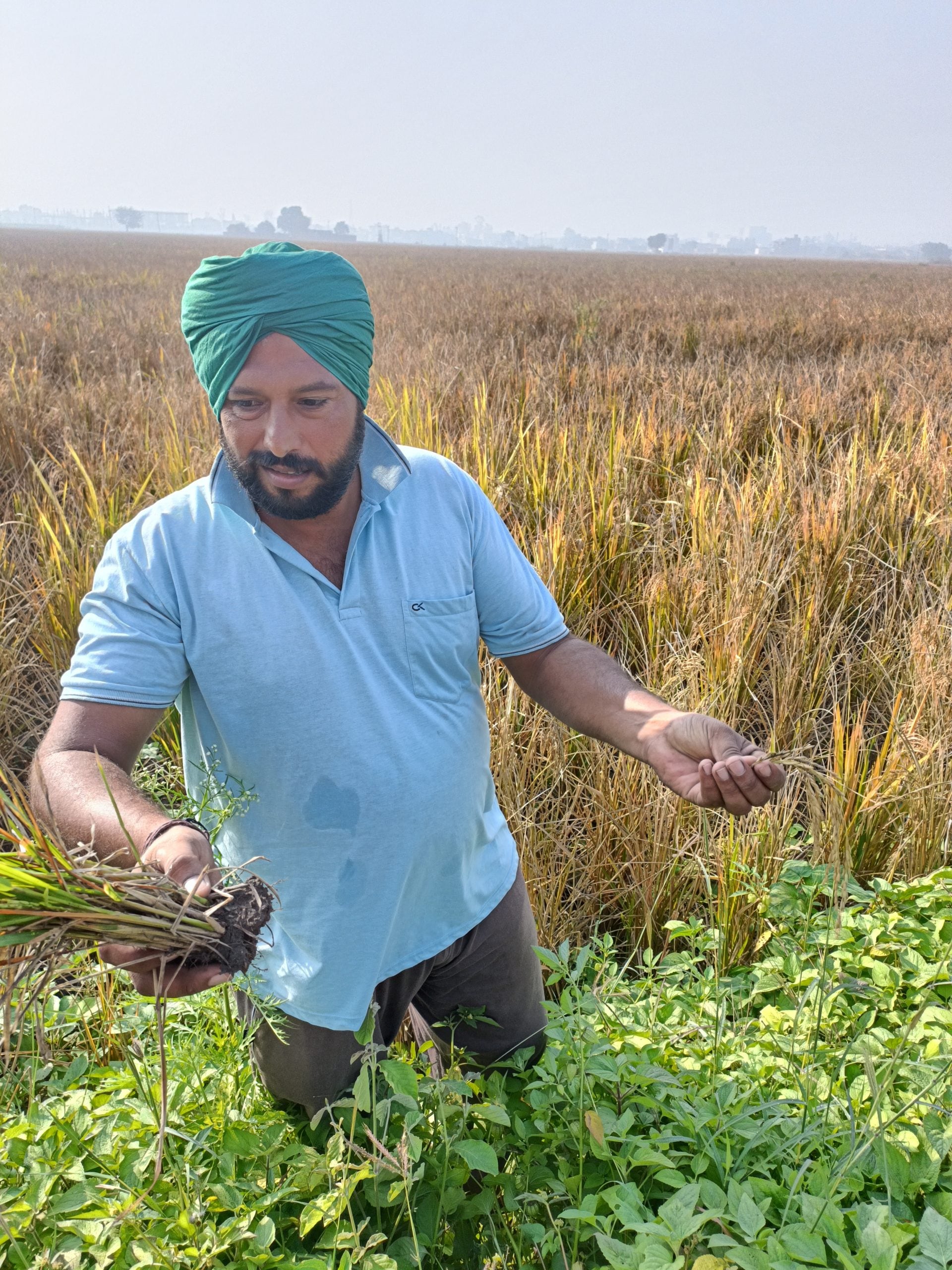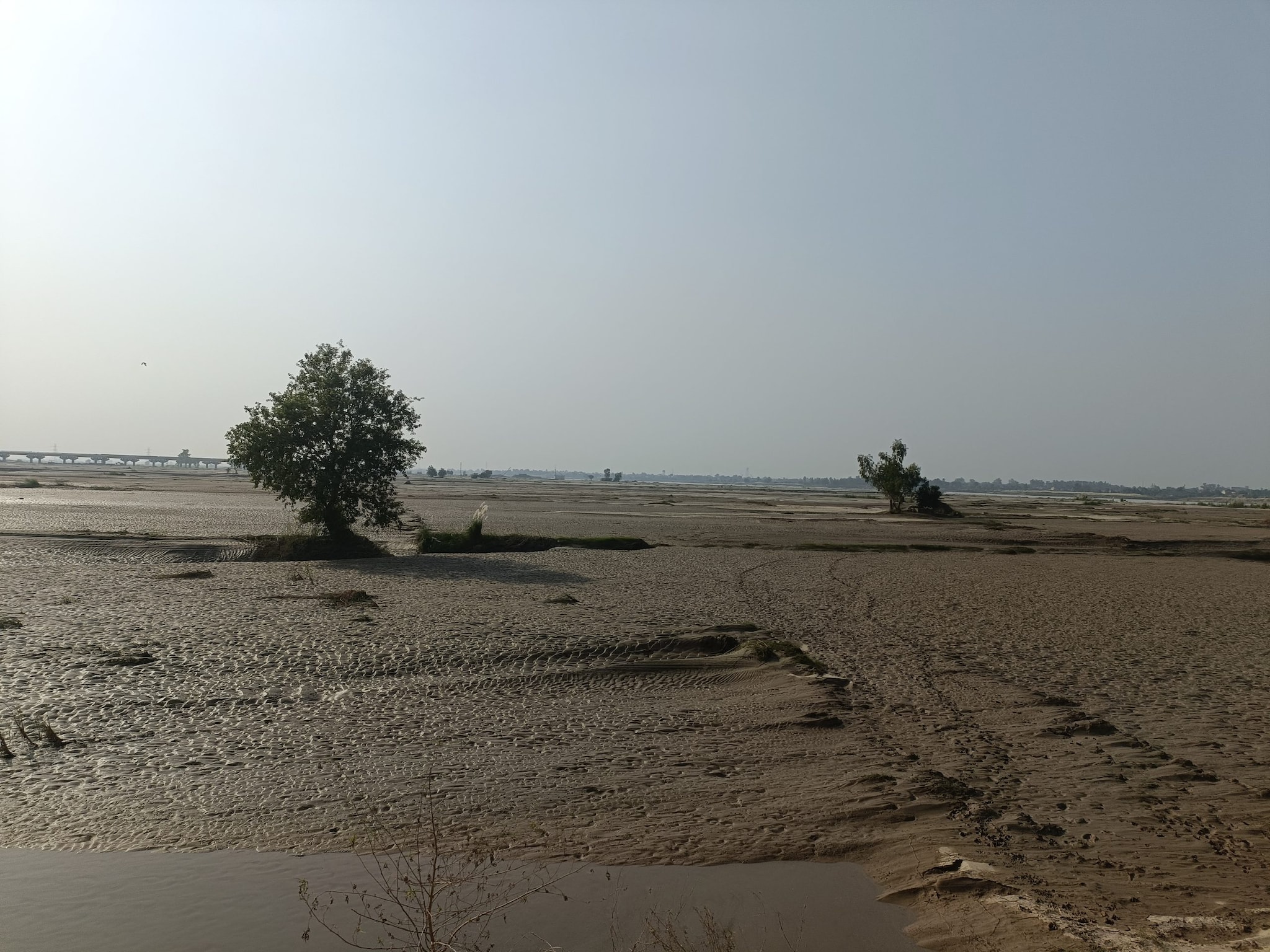ARTICLE AD BOX
Last Updated:October 16, 2025, 11:35 IST
Paddy harvesting is slow to pick up, with farmers counting their losses due to floods, sand deposited in fields and unseasonal rains causing mature crops to be overrun by fungus.

The devastating floods in late August had submerged paddy-sown fields, sweeping away cattle and homes. (Image: News18)
Every year, as toxic smog envelops the national capital region, the spotlight inevitably shifts to Punjab – India’s breadbasket. One of the largest paddy-growing states, it produces nearly 20 million metric tonne of stubble each October-November. Much of it is burned by farmers, who race against time to prepare their fields for the next crop, within a tight sowing window.
However, this year, farmers in this agricultural state are battling the aftermath of one of the worst floods of the century. Crops over nearly 3 lakh hectares of cultivable land were destroyed, as the rivers – Ravi, Satluj, Beas and Ghaggar swelled up due to intense, heavy monsoon rains in the catchment areas of Jammu and Kashmir and Himachal Pradesh in late August.
“Fasal to chali gyi, par chaar-chaar foot ret pad gyi. Agli fasl di bi barbaadi ho gyi. (The crop is gone, but now there is nearly four feet sand settled in our fields disrupting the next crop cycle too)," says Sukhbir Singh from Nurowal village in Kapurthala staring into the distance, at his 12 acres of land inundated by gushing water of the Beas river.

The devastating floods in late August had submerged paddy-sown fields, sweeping away cattle and homes, and affecting over 3 lakh people across the state. At a time when farmers reap the fruit of their harvest, they are left counting their losses. Agricultural experts say the sowing of the next crop, wheat in November, cannot begin until 2-3 feet of sand settled in the fields is physically removed.
An extensive analysis done by Punjab Agricultural University (PAU) in villages across Amritsar, Gurdaspur, Ferozepur, Kapurthala and Patiala showed that the floods reshaped the farmlands in complex ways. Some fields were buried under deposits exceeding three feet, with heavier sand deposition with possible threats to productivity of Rabi crops.

The paddy, already hit by heavy rains in August-September, took a further hit in October due to unseasonal rains. Farmers in Sangrur, Patiala reported significant drop in crop yields, highlighting fungal infestation in crops due to untimely rains.
“Odhar baadh ne maar ditte, idar bimari ne (In one region, floods destroyed the fields, in another, the crops were struck by disease)," says Balwant Singh, from Cheeka village in Sangrur, sharing the plight of farmers this season. While the floods in late August inundated the paddy fields in the Majha region of Amritsar, the Malwa belt of Sangrur faced crop losses due to unseasonal rains affecting crop yield causing the crops to be overrun by fungus, which farmers referred to as haldi rog.
HARVESTING YET TO GAIN MOMENTUM
Consequently, harvesting is also slow to pick up across the state, compared to last year, with experts expecting the process to gather pace over the next fortnight. Paddy harvesting normally begins around September 15, with early-sown varieties reaped first, and the process completed by late October and first week of November. Farmers race against time to then prepare their fields for next season, sowing Rabi crops like wheat before mid-November. Some also grow short-duration crops, such as potatoes between the two seasons.
“The damage from this year’s floods has been unprecedented. The main challenge now is to physically remove the layers of sand deposited in the fields. Additionally, heavy rains in August-September, extending into the first week of October when crops start to mature, left crops vulnerable to fungal attacks," said Dr Rajeev Sikka from Punjab Agricultural University (PAU), Ludhiana. “With dry weather now setting in, harvesting is expected to pick up in the next two weeks. We strongly advise farmers against burning crop residue, especially this year post-floods, when they must use the latest machinery to incorporate the residues back into the soil to improve the soil’s organic carbon and enrich their fields for the next crop."
Both the hotspot districts of Amritsar and Sangrur responsible for the highest number of stubble fires every year have recorded a sharp fall in fire counts detected this season. As of October 16, a total 176 burning incidents were detected by satellites across Punjab – compared to over 1,113 cases last year. Overall, the state has witnessed a decline in stubble burning cases in recent years.

Srishti Choudhary, Senior Assistant Editor at CNN-News18 specializes in science, environment, and climate change reporting. With over a decade of extensive field experience, she has brought incisive ground repo...Read More
Srishti Choudhary, Senior Assistant Editor at CNN-News18 specializes in science, environment, and climate change reporting. With over a decade of extensive field experience, she has brought incisive ground repo...
Read More
Location :
Amritsar, India, India
First Published:
October 16, 2025, 11:35 IST
News india 'The Crop Is Gone...': Punjab Battles Flood Aftermath, Untimely Rains Slow Down Harvest
Disclaimer: Comments reflect users’ views, not News18’s. Please keep discussions respectful and constructive. Abusive, defamatory, or illegal comments will be removed. News18 may disable any comment at its discretion. By posting, you agree to our Terms of Use and Privacy Policy.
Read More

 3 hours ago
4
3 hours ago
4









 English (US) ·
English (US) ·